Did you know that the Dominican Republic is home to an astonishing array of sacred natural sites and diverse wildlife? From the breathtaking humpback whale migrations in Samaná Bay to the vibrant bird species in Los Haitises National Park, this Caribbean country is a haven for nature enthusiasts. Let’s explore the remarkable biodiversity and conservation efforts in the Dominican Republic, and discover why it has become a hub for sustainable eco-tourism.
Key Takeaways:
- The Dominican Republic is abundant in sacred natural sites and boasts rich biodiversity.
- Protected areas such as Samaná Bay, Jaragua National Park, and Los Haitises National Park offer unique and diverse habitats for wildlife.
- The conservation efforts in the Dominican Republic aim to preserve the natural treasures and protect endangered species.
- Eco-tourism plays a vital role in fostering sustainable practices and supporting local communities.
- By visiting the Dominican Republic, tourists can experience the beauty of its landscapes and contribute to the preservation of its remarkable natural wonders.
Samaná Bay
Samaná Bay is a natural refuge for wildlife, including humpback whales that visit between January and March. With its white sand beaches, crystal-clear waters, coral reefs, and caves adorned with pre-Columbian pictographs, this region is a nature refuge that attracts nature lovers from around the world.
The pristine beauty of Samaná Bay makes it an idyllic sanctuary for various marine species, notably the majestic humpback whales. These magnificent creatures migrate from the cold waters of the North Atlantic to the warm and protected waters of Samaná Bay to give birth and mate. Visitors have the incredible opportunity to witness their impressive acrobatics and listen to their captivating songs, creating unforgettable memories.
The bay’s ecological significance extends beyond the presence of humpback whales. It is home to a rich biodiversity, including vibrant coral reefs that provide a haven for a multitude of fish species and other marine life. Snorkeling and diving enthusiasts can explore these underwater wonders, encountering colorful fish, sea turtles, and fascinating coral formations.
For those who prefer to stay on land, Samaná Bay offers breathtaking vistas of its turquoise waters and mangrove-fringed coastline. Guided boat tours enable visitors to explore the hidden gems of the bay, including secluded beaches and untouched coves.
Protected Paradise for Nature Lovers
Samaná Bay’s status as a nature refuge ensures the preservation of its pristine environment and the sustainable management of its natural resources. The region’s commitment to conservation has led to the establishment of protected areas, such as the Los Haitises National Park, which safeguards unique rainforests, petroglyphs, and endangered bird species. The park’s awe-inspiring landscapes offer a glimpse into the country’s natural and cultural heritage.
“Samaná Bay is a hidden gem that showcases the Dominican Republic’s commitment to biodiversity preservation and sustainable tourism. It provides a sanctuary for humpback whales and other marine species, inviting visitors to experience the wonders of nature in a responsible and respectful way.” – Marine Conservation Society
Visiting Samaná Bay is not only a chance to connect with nature but also an opportunity to support local communities. The region’s eco-tourism initiatives provide livelihoods for residents and contribute to the conservation efforts that protect the bay’s delicate ecosystem.
| Key Features of Samaná Bay |
Highlights |
| White sand beaches |
Relax and soak up the sun on pristine shores |
| Crystal-clear waters |
Snorkel and dive among vibrant coral reefs |
| Pre-Columbian pictographs |
Explore caves adorned with ancient rock art |
| Humpback whale migration |
Observe the majestic whales and their impressive acrobatics |
| Eco-tourism opportunities |
Support local communities and contribute to conservation efforts |
Whether you’re seeking adventure, relaxation, or an opportunity to appreciate the wonders of nature, Samaná Bay offers it all. This picturesque nature refuge provides an unforgettable experience that truly captures the essence of the Dominican Republic’s natural beauty.
Jaragua National Park
Jaragua National Park is a magnificent expanse of natural beauty and biodiversity located in the Dominican Republic. This protected area is home to various species of wildlife, including the iconic hawksbill turtles and stunning flamingos. Nestled within the park is the picturesque Las Águilas Bay, a paradise of turquoise waters and pristine sandy beaches.
The park is a sanctuary for hawksbill turtles, housing the largest population of these majestic creatures in the entire Caribbean. These turtles, with their unique shell pattern and tranquil presence, contribute to the park’s rich marine ecosystem. Visitors to Jaragua National Park have the incredible opportunity to witness the nesting and hatching of these endangered turtles, a truly unforgettable experience.
Aside from the hawksbill turtles, Jaragua National Park is adorned with the graceful presence of flamingos. The Laguna de Oviedo within the park provides a perfect habitat for these vibrant birds. As you explore the park, you will be enchanted by the sight of flocks of flamingos gracefully wading through the shallow waters, their radiant plumage in perfect harmony with the park’s natural surroundings.
“Jaragua National Park is a true testament to the remarkable biodiversity of the Dominican Republic. From the magnificent Las Águilas Bay to the awe-inspiring hawksbill turtles and flamboyant flamingos, this park is a treasure trove of natural wonders.”
Exploring Jaragua National Park is an adventure that goes beyond terrestrial beauty. The park offers a multitude of activities, including snorkeling and diving in the crystal-clear waters of Las Águilas Bay, where you can witness vibrant coral reefs teeming with marine life. The park’s diverse bird species, such as parrots, herons, and pelicans, also beckon birdwatchers from around the world.
Immerse yourself in the captivating beauty of Jaragua National Park and discover the harmonious coexistence of its remarkable wildlife and stunning landscapes. This natural haven provides a sanctuary for hawksbill turtles and flamingos, reminding us of the importance of preserving and protecting the fragile ecosystems that make the Dominican Republic a true paradise for nature enthusiasts.

| Key Features |
Wildlife |
Activities |
| Las Águilas Bay |
Hawksbill turtles, flamingos, diverse bird species |
Snorkeling, diving, birdwatching |
| Laguna de Oviedo |
Flamingos |
Boat tours, wildlife observation |
Ebano Verde Scientific Reserve
The Ebano Verde Scientific Reserve, located in Constanza, is a remarkable natural sanctuary dedicated to the preservation and conservation of flora, fauna, and water resources.
Spanning 23 square kilometers, this pristine reserve serves as the origin of several rivers, ensuring a sustainable water supply for surrounding ecosystems.
What sets the Ebano Verde Scientific Reserve apart is its incredible biodiversity, housing over 600 species of flora and fauna. This diverse ecosystem provides a haven for numerous plant and animal species, contributing to the overall conservation efforts in the Dominican Republic.
Among the many treasures found within the reserve, orchid enthusiasts will be delighted to discover 80 different types of orchids, each showcasing its unique beauty. These vibrant and delicate flowers add a touch of elegance to the lush landscape, attracting visitors from around the world.
By protecting and preserving the Ebano Verde Scientific Reserve, conservationists and environmentalists ensure the survival of endangered species and contribute to the ecological balance of the region.
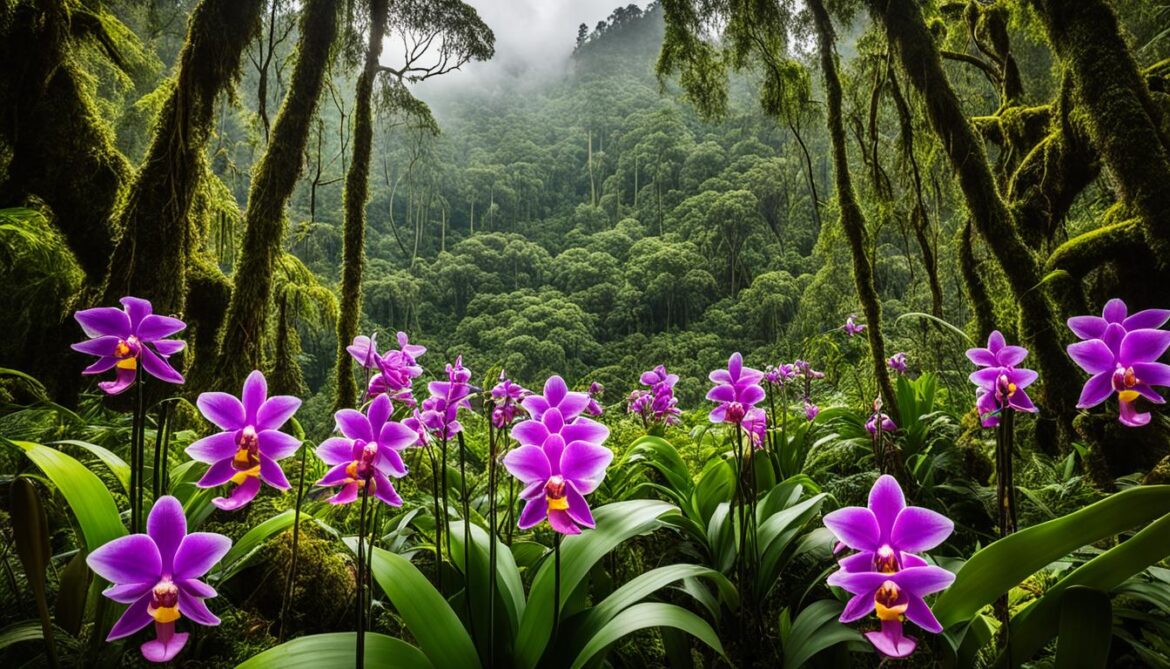
The image above showcases the exquisite orchids found within the Ebano Verde Scientific Reserve, exemplifying the beauty of the flora preserved in this remarkable natural haven.
Lago Enriquillo and Isla Cabritos
Lago Enriquillo is a vast body of water situated in the southwest of the Dominican Republic. This remarkable lake serves as a habitat for a diverse range of reptile species, including the endangered American crocodile, rhinoceros iguana, and Ricord’s ground iguana. The abundant presence of reptiles in this area highlights the importance of Lago Enriquillo in conserving these unique creatures.
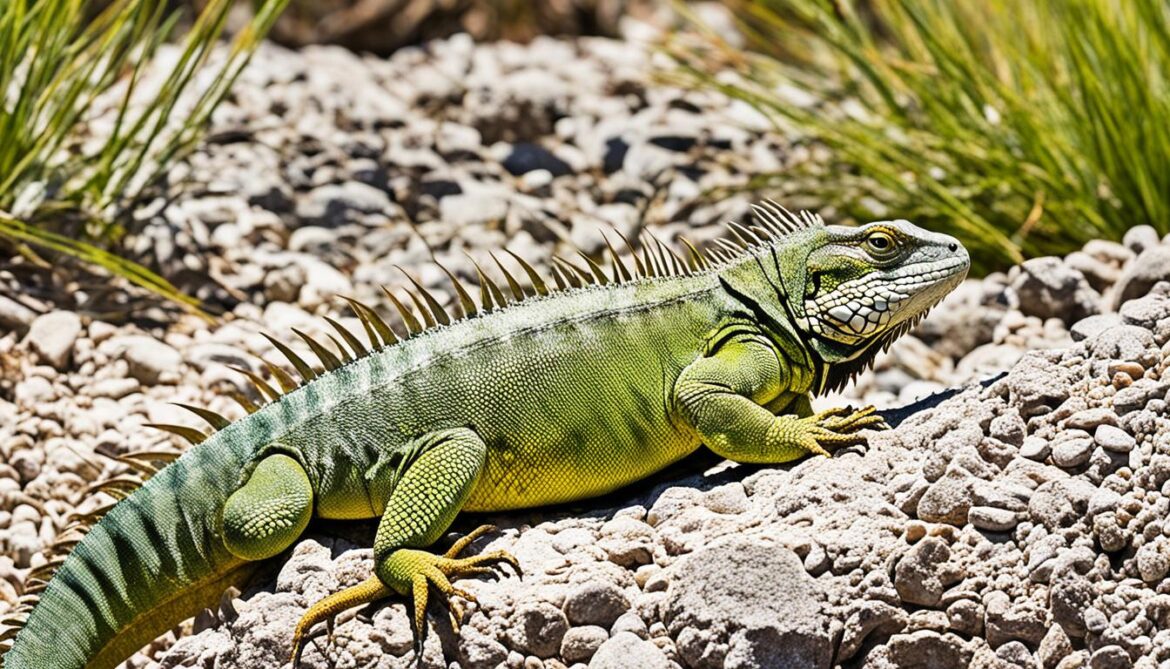
Isla Cabritos, an island located within Lago Enriquillo, offers a captivating ecotourism experience. This stunning island is known for its vibrant wetlands, which provide an ideal environment for various flora and fauna. Visitors to Isla Cabritos can witness the natural beauty of wetlands and explore the diverse ecosystems that exist in this sanctuary.
Reptile Species in Lago Enriquillo and Isla Cabritos:
| Reptile Species |
Status |
| American Crocodile |
Endangered |
| Rhinoceros Iguana |
Endangered |
| Ricord’s Ground Iguana |
Endangered |
The endangered status of reptiles in Lago Enriquillo and Isla Cabritos highlights the need for conservation efforts to protect their populations. These reptile species contribute to the rich biodiversity of the region and play a crucial role in maintaining the ecological balance.
“Exploring the captivating reptile habitats of Lago Enriquillo and Isla Cabritos offers a unique opportunity to witness the intricate beauty of nature and raise awareness about the importance of protecting these endangered species.”
By understanding the significance of these reptiles and their habitats, we can contribute towards the conservation of Lago Enriquillo and Isla Cabritos, ensuring a sustainable future for both the reptiles and the environment they call home.
Los Haitises National Park
Located in the northwest of the country, Los Haitises National Park is a natural wonder characterized by its lush rainforest and historical petroglyphs. This protected area offers visitors a unique opportunity to immerse themselves in the beauty of nature while discovering its rich cultural heritage.
The rainforests of Los Haitises National Park are teeming with life, providing a sanctuary for endangered bird species such as the stygian owl, pelican, and fork-tailed flycatcher. As you explore the park’s winding paths, you may also encounter fascinating reptiles like boa constrictors, as well as marine creatures like sea turtles and dolphins along its picturesque beaches and cays.
“Los Haitises National Park is a treasure trove of biodiversity and ancient art. Its rainforests act as a sanctuary for endangered bird species, while the petroglyphs offer a glimpse into the history and culture of the region.”
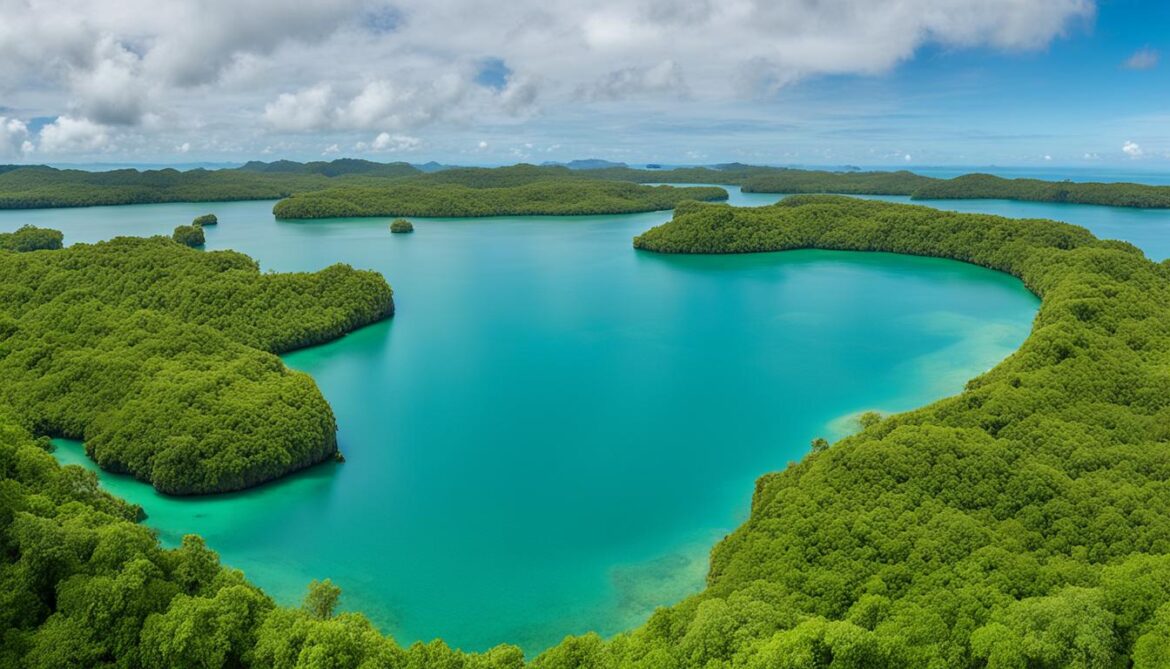
One of the highlights of Los Haitises National Park is the presence of petroglyphs, which are ancient rock carvings made by the indigenous Taíno people. These carvings depict their beliefs, rituals, and way of life. Exploring the park’s hidden caves and cliffs, you can marvel at these fascinating works of art and gain insight into the rich cultural heritage of the Dominican Republic.
Whether you’re a nature enthusiast, history buff, or simply seeking tranquility amidst breathtaking scenery, Los Haitises National Park is a must-visit destination. Immerse yourself in the beauty of its rainforests, explore the intriguing petroglyphs, and witness the diverse array of bird and marine life that call this national park their home.
Estero Hondo
Estero Hondo, located in the province of Puerto Plata, is the largest reserve of Antillean manatees in the Dominican Republic. These magnificent and endangered herbivorous creatures can reach lengths of over four meters. The sanctuary provides a unique opportunity to observe and appreciate these gentle giants.
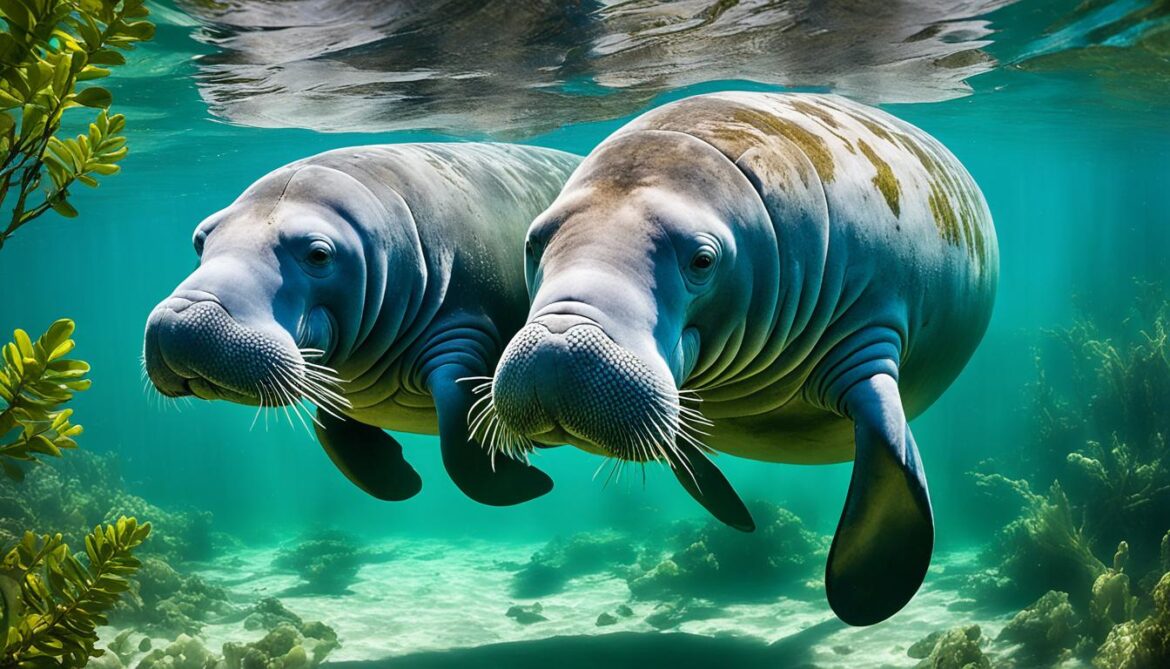
Key Features of Estero Hondo Marine Mammal Sanctuary:
- The largest reserve of Antillean manatees in the Dominican Republic.
- Home to magnificent and endangered herbivorous manatees.
- Located in the province of Puerto Plata.
- Offers a unique opportunity to observe and appreciate these gentle giants.
Conservation Efforts:
The Estero Hondo Marine Mammal Sanctuary plays a crucial role in the conservation of Antillean manatees. Through ongoing research, monitoring, and protection measures, the sanctuary aims to ensure the survival and well-being of these magnificent creatures. Visitors to Estero Hondo have the chance to learn about the importance of marine conservation and actively contribute to the preservation of this endangered species.
Visiting Estero Hondo:
To experience the beauty of Antillean manatees in their natural habitat, visitors can arrange guided tours and excursions to Estero Hondo Marine Mammal Sanctuary. Knowledgeable guides will provide insights into the behavior and ecology of manatees while following responsible wildlife viewing practices. The sanctuary offers a tranquil and awe-inspiring setting for nature enthusiasts and wildlife lovers.
| Location |
Province |
Species |
| Estero Hondo |
Puerto Plata |
Antillean Manatees |
The Three Eyes National Park
The Three Eyes National Park, discovered in 1916, is named after its three underground freshwater lakes. These lakes, formed by tectonic fractures, hold great cultural and historical significance for the Taino people. The park offers a breathtaking landscape of stalactites and stalagmites, showcasing the area’s natural beauty and Taino heritage.

As visitors explore the Three Eyes National Park, they are transported into an enchanting world of hidden wonders. The crystal-clear, turquoise waters of the underground lakes cast an ethereal glow, creating a mesmerizing spectacle. Stalactites and stalagmites adorn the limestone caves, forming intricate formations that have taken centuries to develop. Nature enthusiasts and history buffs alike will appreciate the beauty and cultural significance of this unique landscape.
“The Three Eyes National Park is a captivating testament to the geological marvels and rich heritage of the Dominican Republic. With its underground freshwater lakes and storied past, this natural treasure is a must-visit destination.”
Exploring the Three Eyes National Park
Visitors to the park can embark on guided tours that take them through the labyrinthine caves and around the tranquil lakes. These tours provide a fascinating insight into the Taino culture and the geological wonders of the area. The knowledgeable guides share stories of the Taino people, their spiritual connection to the lakes, and the enduring legacy of their civilization.
As you traverse the winding pathways, you’ll encounter lush vegetation, hidden passageways, and unique rock formations. The dimly lit caves create an atmosphere of mystery and intrigue. The stillness of the underground lakes and the gentle sound of dripping water add to the sense of tranquility and awe. It’s an experience that immerses you in the rich history and natural beauty of the Three Eyes National Park.
Whether you’re a history enthusiast, a nature lover, or simply seeking a unique adventure, a visit to the Three Eyes National Park is an opportunity to connect with the Dominican Republic’s cultural and natural heritage. This hidden gem showcases the country’s commitment to preserving its Taino heritage and its unique geological wonders.
| Highlights of the Three Eyes National Park |
| Underground freshwater lakes with crystal-clear waters |
| Stunning stalactites and stalagmites formations |
| Guided tours providing insight into Taino culture and history |
| Tranquil and serene atmosphere |
| Opportunity to explore hidden caves and passageways |
Sierra de Barohuco
The Sierra de Barohuco, situated in the southwest of the Dominican Republic, is a haven for birdwatching enthusiasts and nature lovers alike. This national park boasts a diverse range of endemic bird species that cannot be found anywhere else, making it a must-visit destination for ornithologists and wildlife photographers.
One of the highlights of the Sierra de Barohuco is the cúa, a beautiful bird with vibrant plumage and a melodic song that echoes through the lush forest. Birdwatchers can also spot the chirri de Bahoruco, known for its distinctive call and stunning displays of acrobatics in the sky.
“The Sierra de Barohuco is a paradise for birdwatching enthusiasts, offering unmatched opportunities to observe and photograph endemic species in their natural habitat.”
The park is also home to the cotorra, a charismatic parrot species, and the cigua palmera, which happens to be the national bird of the Dominican Republic. With its majestic palm trees and crystal-clear streams, the Sierra de Barohuco provides an ideal habitat for these unique bird species.
Exploring the Sierra de Barohuco is a rewarding experience, filled with breathtaking landscapes, vibrant birdlife, and the soothing sounds of nature. Whether you’re an avid birdwatcher or simply appreciate the beauty of the natural world, a visit to this national park is sure to leave you captivated and inspired.
Birdwatching Tips in Sierra de Barohuco
- Bring binoculars and a camera with a telephoto lens to get a closer look at the endemic bird species.
- Wear comfortable clothing and sturdy footwear for walking along the park trails.
- Visit during the early morning or late afternoon when birds are most active.
- Listen for bird calls and follow their sound to spot elusive species.
- Respect the park’s rules and regulations to ensure the protection of the birds and their habitat.
| Endemic Bird Species |
Appearance |
Habitat |
| cúa |
Colourful plumage, melodic song |
Lush forest |
| chirri de Bahoruco |
Distinctive call, aerial acrobatics |
Open skies |
| cotorra |
Charismatic parrot species |
Palm tree habitats |
| cigua palmera |
National bird of the Dominican Republic |
Palm tree habitats |
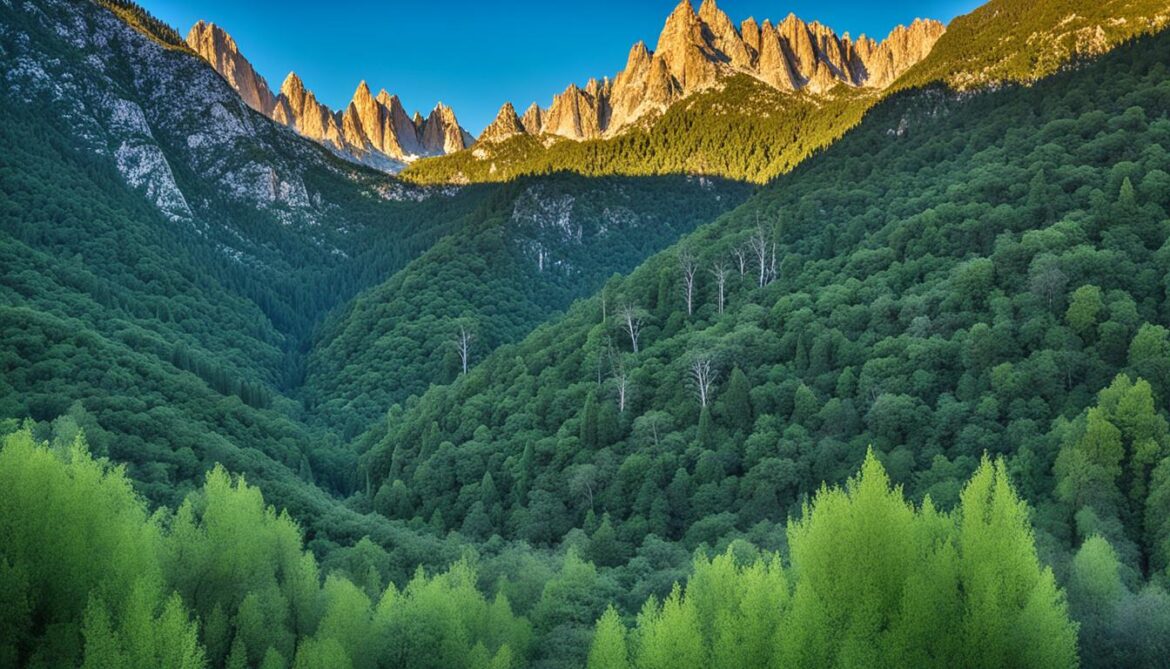
Conclusion
The Dominican Republic is a haven for eco-tourism enthusiasts, thanks to its abundance of sacred natural sites and diverse biodiversity. From the breathtaking beauty of Samaná Bay to the protected wonderland of Jaragua National Park, the country offers a range of unique habitats for visitors to explore and appreciate.
However, preserving these natural treasures requires dedicated conservation efforts. By promoting sustainable tourism practices and supporting local communities, the Dominican Republic aims to safeguard its sacred sites and protect endangered species for future generations.
Visitors have the opportunity to immerse themselves in the stunning landscapes, encounter a variety of wildlife, and contribute to the preservation of these remarkable natural wonders. Together, we can ensure the continued beauty and biodiversity of the Dominican Republic’s sacred natural sites for years to come.
FAQ
What are some of the sacred natural sites in the Dominican Republic?
The Dominican Republic is home to several sacred natural sites, including Samaná Bay, Jaragua National Park, and Los Haitises National Park.
What wildlife can be found in Samaná Bay?
Samaná Bay is a nature refuge that attracts humpback whales between January and March. It is also home to diverse marine life, coral reefs, and caves adorned with pre-Columbian pictographs.
What makes Jaragua National Park special?
Jaragua National Park is known for its picturesque Las Águilas Bay and the largest population of hawksbill turtles in the Caribbean. The park also offers a habitat for flamingos and various bird species.
What can I expect to see at Ebano Verde Scientific Reserve?
Ebano Verde Scientific Reserve is dedicated to conservation and houses over 600 species of flora and fauna, including 80 types of orchids. It spans 23 square kilometers and is a source of several rivers.
What reptile species can be found at Lago Enriquillo and Isla Cabritos?
Lago Enriquillo is home to various reptile species, including the endangered American crocodile, rhinoceros iguana, and Ricord’s ground iguana. Isla Cabritos, located within the lake, features vibrant wetlands.
What can I see at Los Haitises National Park?
Los Haitises National Park showcases lush rainforests, historical petroglyphs, and endangered bird species, such as the stygian owl, pelican, and fork-tailed flycatcher. The park also offers encounters with boa constrictors, sea turtles, and dolphins.
Where can I find Antillean manatees in the Dominican Republic?
The Estero Hondo reserve, situated in the province of Puerto Plata, is the largest sanctuary for Antillean manatees in the country. These magnificent and endangered herbivorous creatures can be observed in their natural habitat there.
What makes the Three Eyes National Park unique?
The Three Eyes National Park is known for its three underground freshwater lakes, formed by tectonic fractures. These lakes hold cultural and historical significance for the Taino people and offer a visually stunning landscape of stalactites and stalagmites.
What can birdwatchers find at Sierra de Barohuco?
Sierra de Barohuco is a national park that offers a unique destination for birdwatchers. It is home to endemic bird species, including the cúa, chirri de Bahoruco, cotorra, and cigua palmera, the national bird of the Dominican Republic.
How important is the conservation of sacred natural sites in the Dominican Republic?
Conservation efforts are vital to preserving the Dominican Republic’s sacred natural sites and biodiversity. By promoting sustainable tourism and supporting local communities, the country strives to protect these natural treasures and ensure the survival of endangered species.
Source Links






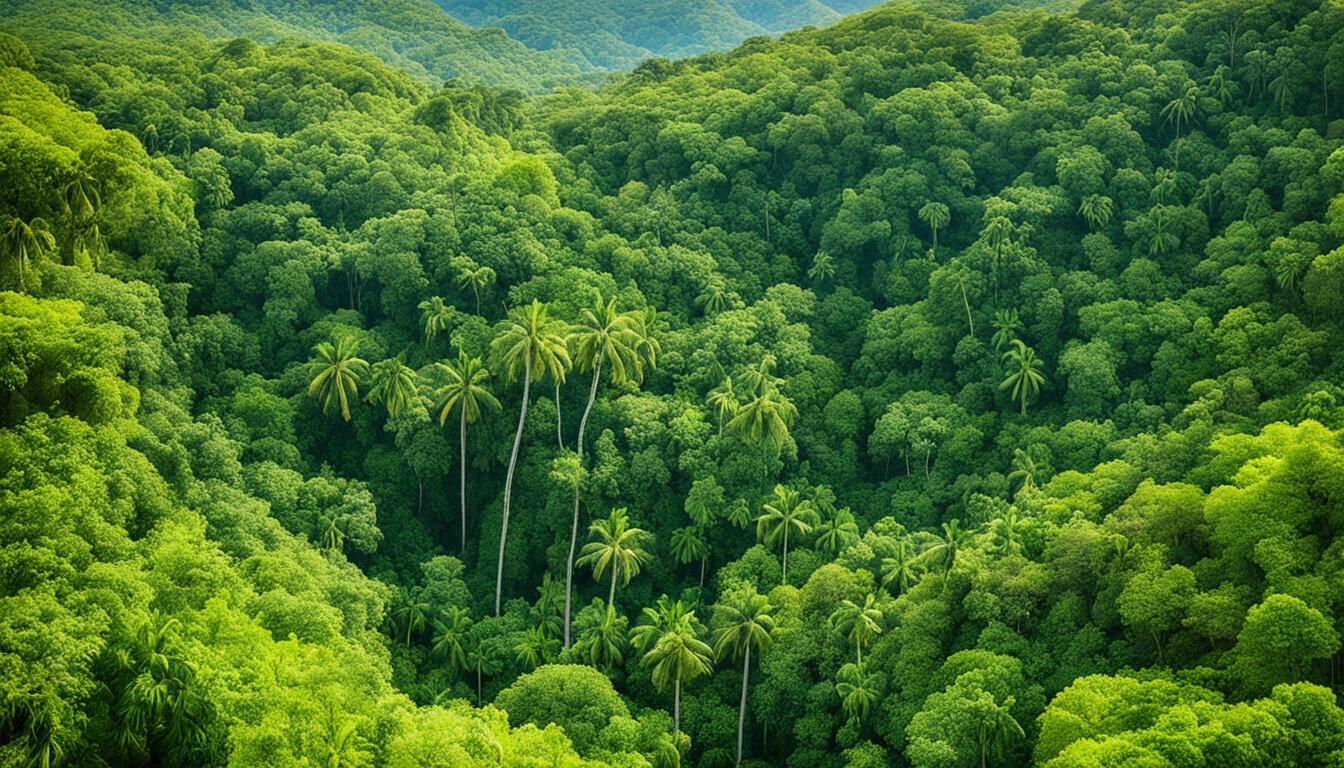


















Post comments (0)